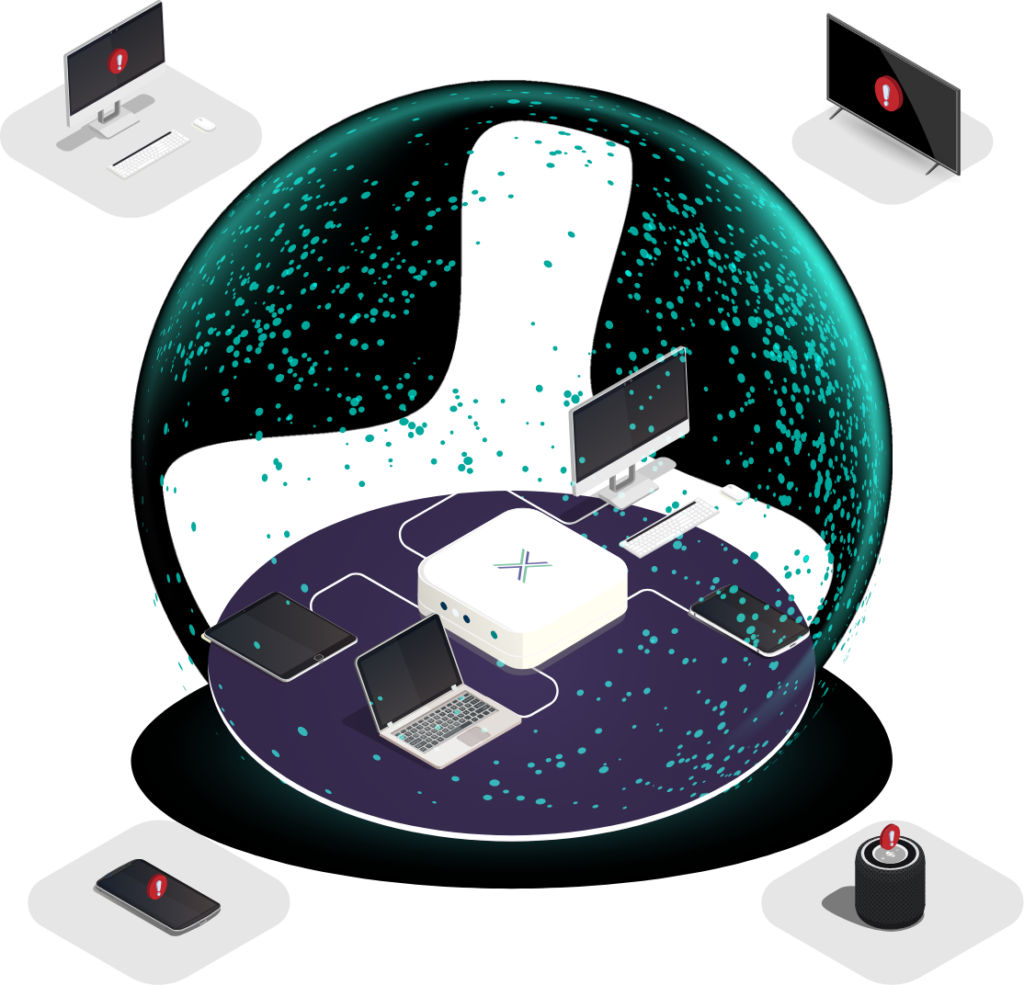Security agencies including the NSA, GCHQ and CISA have issued repeated warnings about the risks posed by network edge devices such as routers, gateways and firewalls. Their guidance is consistent: if these devices are not secured and centrally managed, they can become dangerous entry points into business systems.
Yet many organisations still overlook them. Attention tends to focus on protecting data centres, cloud platforms or employee endpoints. But one of the most vulnerable parts of modern networks sits beyond those defences: the routers and gateways that staff use when connecting from homes, hotels, serviced offices or client sites.
These devices form the uncontrolled network edge, where IT has little or no oversight. They may appear harmless, but in practice they present some of the most serious hidden risks to company security.
Why Edge Devices Pose a Growing Threat
Most consumer and small office routers ship with insecure firmware. Updates are infrequent, hard to apply, or in many cases stop altogether once the manufacturer moves on to a newer product line.
Attackers exploit this reality. Automated scanning tools sweep the internet for devices with known flaws. Once identified, they can be compromised in seconds.
Consider these facts:
- Many routers remain unpatched for years, leaving them open to decades-old vulnerabilities.
- Manufacturers often ship devices with default credentials or even hidden backdoors.
- Research shows that 30% of breaches in small and medium businesses begin with edge devices.
- Security agencies such as the NSA, GCHQ and CISA have issued repeated warnings about the dangers of unpatched routers and gateways.
Real-World Examples of Exploited Routers
The risks are not theoretical. They have already been exploited in the real world:
- Asus backdoor attacks: Certain Asus routers contained hidden admin interfaces that attackers used to gain full control.
- TP-Link vulnerabilities: Flaws in consumer TP-Link firmware were actively exploited by botnets to attack Microsoft 365 accounts.
- DrayTek router weaknesses: Poorly protected management interfaces allowed attackers to redirect traffic invisibly.
- Mirai malware: This infamous botnet infected thousands of routers, turning them into a massive distributed denial-of-service weapon.
- VPNFilter malware: Discovered by Cisco Talos, this malware infected over 500,000 routers worldwide, stealing data and rendering devices unusable.
Each case highlights how attackers see routers not as background equipment but as prime targets.
Edge Risks in Everyday Scenarios
The dangers become clearer when we apply them to common work settings:
| Scenario | Risk |
| Home access | A remote worker logs in through their router, which has not been updated since installation. A family member’s infected device on the same Wi-Fi exposes the company connection. |
| Hotel Wi-Fi | A manager accesses dashboards late at night. The shared hotel router is outdated and vulnerable, allowing attackers in neighbouring rooms to intercept data before it reaches the VPN. |
| Serviced office | A law firm uses a co-working space. The office provider manages the routers, which have never been patched. Sensitive case files pass through a compromised network. |
| Client site | A consultant logs in to company systems from a client’s office. The client’s router is outside the MSP’s control but still carries the organisation’s business traffic. |
Each of these represents a direct breach of security principles, yet they happen daily.
Why Traditional Security Tools Are Not Enough
Companies often assume that VPNs and endpoint security cover these risks. Unfortunately, they do not.
- VPNs encrypt traffic in transit but cannot stop attackers already inside the local network from launching lateral attacks.
- Endpoint protection shields the device but cannot patch or secure a compromised router.
- Firewalls are effective inside corporate networks, but at the uncontrolled edge they depend on routers that may already be compromised.
This is why the router remains the weak link. If it is unsafe, the entire chain of security is undermined.
Why Router Risks Are Easy to Miss
Routers are installed once, often by an ISP or building provider, and then forgotten. Unlike laptops or servers, they are not refreshed regularly. Many homes and offices are still running equipment that is more than five years old.
The assumption is simple: if the internet works, the router must be fine. In reality, it may be riddled with vulnerabilities. For IT teams, the scale of the problem is overwhelming. Each staff member connecting from outside the office is using a different router model and firmware version. Monitoring them all is impossible.
How Loxada Solves the Problem
Loxada closes this blind spot by replacing reliance on unmanaged routers with centrally controlled, secure devices. Instead of leaving staff to connect through whatever hardware happens to be available, Loxada provides managed routers with custom firmware.
Key features include:
- Custom, hardened firmware: Replaces factory software entirely, removing hidden flaws and default settings.
- Automatic updates: Patches are applied in the background without user involvement.
- Traffic separation: Business activity is isolated from other devices on the same local Wi-Fi.
- Centralised management: IT gains visibility and control of all routers, wherever they are deployed.
- Plug-and-play operation: Staff simply connect. No technical knowledge or software installation is needed.
The result is a secure on-ramp that turns unsafe environments into trusted access points.
Why This Matters Now
Attackers increasingly target edge devices because they are easier to exploit than hardened servers or cloud platforms. Exploiting a single weak router can open a pathway into entire corporate systems.
Government guidance is unambiguous. Agencies such as the NSA, GCHQ and CISA have all warned organisations to take router risks seriously and adopt hardened, centrally managed solutions.
With remote and hybrid access now part of daily business, ignoring the uncontrolled network edge is no longer an option.
The Bottom Line
Routers and other edge devices are too often ignored, yet they represent one of the most common starting points for breaches. Vulnerabilities at the uncontrolled network edge put company data and systems at risk every time staff connect from homes, hotels, serviced offices or client sites.
Traditional tools like VPNs and endpoint security are important, but they do not secure the router itself. That is why Loxada provides managed routers with secure firmware, automatic updates and central control.
By turning routers into safe, controlled entry points, Loxada transforms the uncontrolled network edge from a liability into a strength. Staff connect confidently, IT stays in control and the organisation closes one of its most dangerous blind spots.
Want to learn more? Read more about how Loxada creates secure devices

